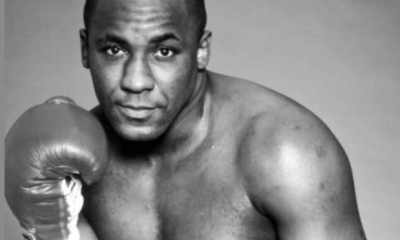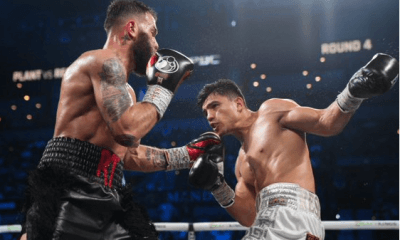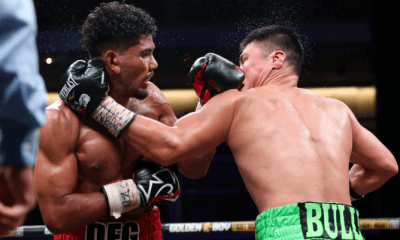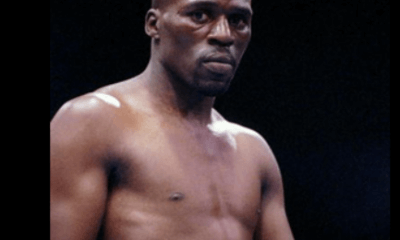Featured Articles
Avila Perspective. Chap. 107: El Flaco, the Charlo twins and More
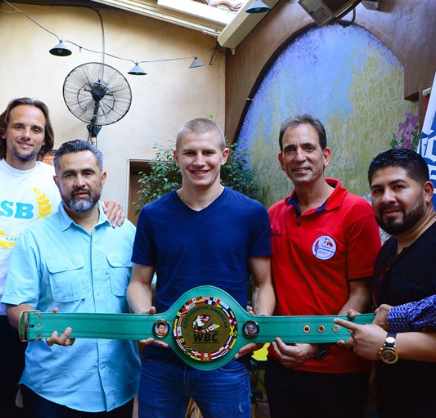
Avila Perspective. Chap. 107: El Flaco, the Charlo twins and More
LOS ANGELES-Middleweights and light middleweights reigned supreme last week.
Ukrainian super welterweight Serhii Bohachuk led the way with a convincing performance in Merida, Mexico last Friday where he defeated Alejandro Davila by technical knockout.
It rained throughout the fight and Bohachuk rained blows just as feverishly to score his 18th consecutive knockout in 18 pro fights.
Can anyone stop El Flaco?
The Ukrainian super welterweight who was nicknamed “El Flaco” because of his thin frame, used his superior boxing skills to out-battle determined Mexican fighter Davila and force that fighter’s corner to end the fight on a slippery canvas.
Though no knockdowns were scored it was a smart move by Davila’s Mexican trainers. He was getting battered.
“Alejandro Davila was a really tough fighter. He didn’t want to quit,” said Tom Loeffler head of 360 Promotions that promotes Bohachuk. “His trainers were arguing with him and he didn’t want to stop. But Serhii had hurt him a lot. It was a good decision on their part.”
Bohachuk, 25, a thinly framed and long-armed 154-pounder, combines tireless and precise punching mixed with experience gained in more than 100 amateur fights. Plus, he has an acute sense of vision and the ability to see incoming fire.
“My style is Mexican style,” said Bohachuk on Thursday at a press conference in Los Angeles. “That’s how I like to fight.”
This last fight was of particular concern because it was Bohachuk’s first with new trainer Manny Robles Jr. after years with Abel Sanchez.
Before Robles accepted the new fighter as a pupil, he reached out to the former trainer Sanchez. Both conversed about the situation and Robles said Sanchez gave him his blessing.
Moving from one trainer known for teaching an aggressive style of fighting to another who practices a slightly more defensive flavor can have consequences. One important factor is the fighter’s work habits.
“He’s disciplined. He has integrity,” said Robles when describing Bohachuk. “Style-wise we’re more about controlled aggression. And learning how to fight backwards.”
Robles said he’s learned that even the most aggressive punchers need to learn how to fight going in reverse. Though it didn’t occur in this last fight, Bohachuk was prepared.
So how good is Bohachuk?
It’s difficult to argue against 18 consecutive knockout wins. It’s not like he’s facing the Charlo brothers. But is he good enough to compete with fighters near that caliber?
Against Davila, who had only tasted defeat once before against Canada’s Mikael Zewski, the slender Ukrainian showed a patient approach against the ultra-aggressive Mexican fighter who attacked like a souped-up windmill.
It was a telling performance.
Bohachuk looked like a contender with his careful but determined movement. He seemed to be able to watch the incoming fire and adjust smoothly without panicking. Slowly he began busting blows at whatever openings he saw. He never over-punched and with the TKO, he triumphed in his first defense of his WBC Continental Americas super welterweight title.
Looks like Loeffler (pictured in the red shirt) has another champion on the rise.
Charlos
Speaking of champions, the brothers Jermell and Jermall Charlo shared a Showtime pay-per-view fight card last Saturday and both defended their world titles successfully.
For years I’ve witnessed the rise of the Charlo brothers from their appearances on Golden Boy cards to their current performances with Premier Boxing Champions. Though each has a world title, I did not think they were ready for the monsters of their divisions: guys like Gennady Golovkin, Daniel Jacobs or Saul Alvarez.
Well, now they are more than ready.
Jermell Charlo, the WBC super welterweight titlist, added the WBA and IBF titles to his waist with an impressive performance. Yes, he knocked out Jeison Rosario with a solar plexus punch, but more than that, he showed an intelligent approach in dissecting the dangerous Dominican fighter.
Both brothers have always shown athleticism and skill, but their ring IQ has risen dramatically and they are at the top of the peak now.
Jermall Charlo did exactly what I thought he would do and skillfully defeated a contender who had tested both Golovkin and Jacobs.
It’s on to better things for the Charlos brothers.
Saturday Night Fights
A fan-less Los Angeles fight card at Microsoft Theater features another set of twins in the brothers Barrientes. The Premier Boxing Champions fight card will be shown on Fox Sports 1 on Saturday, Oct. 3, at 5 p.m. PT.
The main event showcases welterweights Paul Kroll (7-0, 6 KOs) versus Lucas Santamaria (11-1-1) in a 10-round fight.
Kroll fights out of Philadelphia and that almost always means he’s a fighter. A real fighter and not a slapper and holder. He meets Orange County’s Santamaria who upset Mykal Fox a month ago. Both guys can fight inside and that means lots of action.
It should be a very good fight.
In the preliminaries Angel Barrientes (2-0) meets Fernando De Anda (2-3) in a six round super bantamweight match. And Chavez Barrientes (2-0) meets Ivan Varela (3-2) in a six round featherweight fight. The Barrientes’ hail from Las Vegas, Nevada and they are pretty tall for their weight class at 5’10 in height.
“Me and my brother train together every day. We really learn well off each other. We’ve been running up at Mt. Charleston to help us with beast level conditioning. I have remained fight-ready all of quarantine. We are ready and excited to get into the ring and show the world what we are all about,” said Chavez Barrientes.
Super Lightweights
A battle between super lightweight contenders highlights the Top Rank boxing card on Saturday night Oct. 3, in Las Vegas. ESPN+ will stream the fight card at 7:30 p.m. PT.
Jose “Chon” Zepeda (32-2, 25 KOs) meets Ivan Baranchyk (20-1, 13 KOs) at the MGM Grand Bubble for a vacant title and more importantly a place supposedly in the front of line for the super lightweight world title.
It’s been known that current WBC and WBO titlist Jose Carlos Ramirez will be facing IBF titlist Josh Taylor in a unification clash. He has already decided to move up in weight whether he wins or loses.
For the past two years Zepeda has claimed he beat Ramirez when they fought in February 2019. He will need total concentration against the Belarussian Baranchyk who promises a knockout of the Mexican fighter.
Baranchyk has only one loss and that was against Taylor in Scotland a year ago. It went the entire 12 rounds.
The card also features some solid prospects including undefeated Gabriel Flores a flashy combination puncher and Duke Ragan an amateur standout in separate fights.
Sunday Morning in England
Tall undefeated light heavyweights are the flavor of the day for a Sunday morning boxing card from Milton Keynes, England, a town located about 50 miles from London. DAZN will stream the Sunday event beginning at 11 a.m. Pacific Time.
Croatia’s Marko Calic (11-0, 6 KOs) stands three inches above six feet in height and for a 175-pounder that is extremely tall.
Ghanaian-born Joshua Buatsi (12-0, 10 KOs) is one inch shorter than Calic but hits harder. We shall see who wins the battle of the tall light heavyweights. Buatsi knocked out Mexico’s Marco Periban and that’s not an easy feat.
The co-main event pits Chantelle Cameron (12-0) versus Brazil’s Adriana Dos Santos (6-0) in a 10-round bout for the vacant WBC female super lightweight world title.
“It’s a short career so I don’t want to be wasting my time, especially with everything that has happened this year,” said Cameron, 29, who fights out of Northampton, England. “I’m 12-0 but I feel like I’ve been waiting a long time for this opportunity. I’m not looking past Adriana at all.”
Photo credit: Al Applerose
Check out more boxing news on video at the Boxing Channel
To comment on this story in the Fight Forum CLICK HERE
-

 Featured Articles3 weeks ago
Featured Articles3 weeks agoThomas Hauser’s Literary Notes: Johnny Greaves Tells a Sad Tale
-
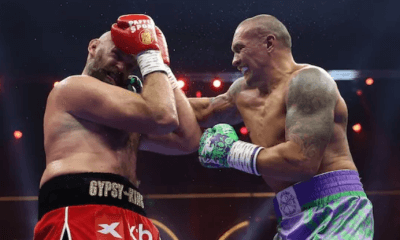
 Featured Articles2 weeks ago
Featured Articles2 weeks agoBoxing Notes and Nuggets from Thomas Hauser
-
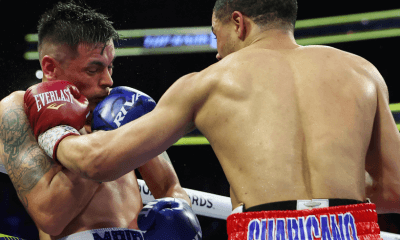
 Featured Articles4 weeks ago
Featured Articles4 weeks agoUndercard Results and Recaps from the Inoue-Cardenas Show in Las Vegas
-
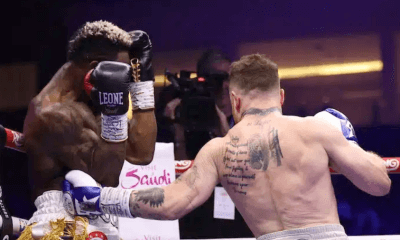
 Featured Articles4 weeks ago
Featured Articles4 weeks agoCanelo Alvarez Upends Dancing Machine William Scull in Saudi Arabia
-
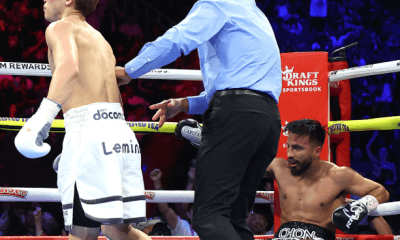
 Featured Articles4 weeks ago
Featured Articles4 weeks agoBombs Away in Las Vegas where Inoue and Espinoza Scored Smashing Triumphs
-
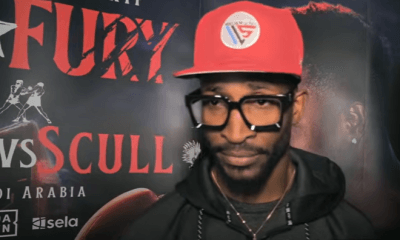
 Featured Articles4 weeks ago
Featured Articles4 weeks agoArne’s Almanac: The Good, the Bad, and the (Mostly) Ugly; a Weekend Boxing Recap and More
-
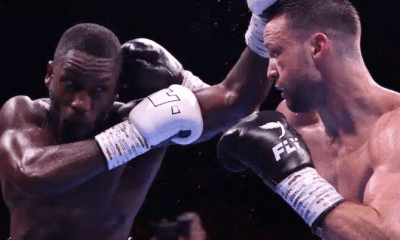
 Featured Articles1 week ago
Featured Articles1 week agoEkow Essuman Upsets Josh Taylor and Moses Itauma Blasts Out Mike Balogun in Glasgow
-
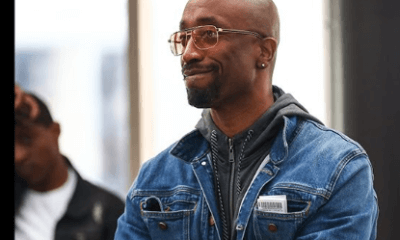
 Featured Articles4 weeks ago
Featured Articles4 weeks ago“Breadman” Edwards: An Unlikely Boxing Coach with a Panoramic View of the Sport

